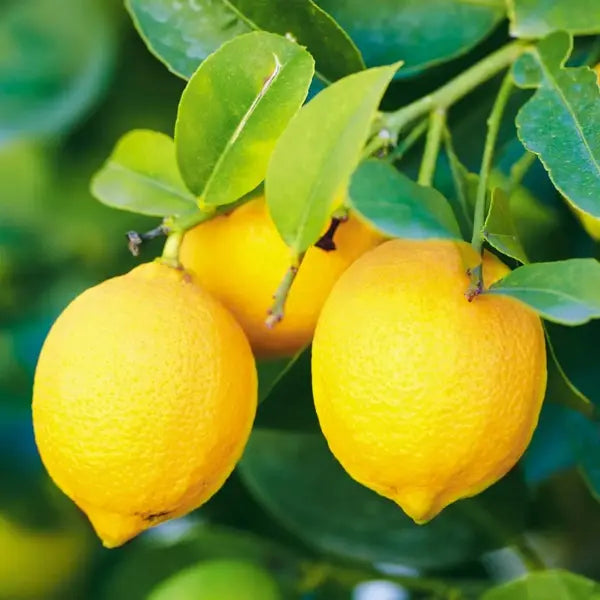
Lemon Plant
Selling Size : Single Plant | Pot Included | Secure Packing
Lemon trees are a rewarding addition to any garden or home, whether planted in the ground or in a container. With proper care, they can produce a bountiful harvest of fragrant and flavorful fruit.
Here's a guide to their care Lemon Plant :
Sunlight
Full Sun is Key: Lemon trees are sun-lovers and require at least 6-8 hours of direct sunlight per day to thrive and produce fruit.
Location: Choose a bright, sunny spot in your garden or a south-facing window if you're growing it indoors.
Watering
Consistent but Not Soggy: The key is to keep the soil consistently moist, but not waterlogged. Lemon trees are very susceptible to root rot, so good drainage is essential.
Check the Soil: A good rule of thumb is to water when the top 1-2 inches of soil feel dry to the touch.
Deep Watering: Water deeply each time, allowing water to drain out of the bottom of the pot or saturate the root ball.
Seasonal Adjustment: Water more frequently during the hot, dry summer months and reduce watering in the winter when the plant's growth slows.
Soil and Potting
Well-Draining Soil: Use a well-draining, slightly acidic soil mix (pH 5.5-6.5). You can use a specific citrus potting mix or create your own by adding sand or perlite to a standard mix.
Container Growing: If you're growing in a container, choose a pot with multiple drainage holes. Terra cotta pots are a good option as they help to wick away excess moisture.
Fertilization
Heavy Feeders: Lemon trees are heavy feeders and benefit from regular fertilization.
Citrus-Specific Fertilizer: Use a balanced fertilizer formulated for citrus trees. These fertilizers have the right ratio of nutrients, including nitrogen, phosphorus, and potassium, as well as essential micronutrients like iron and magnesium.
Timing: Fertilize every 4-6 weeks during the active growing season (spring and summer). Reduce or stop fertilizing in the fall and winter.
Pruning
Purpose: Pruning helps maintain the tree's shape, promotes healthy growth, improves air circulation, and encourages better fruit production.
Timing: The best time to prune is in late winter or early spring before new growth begins.
What to Prune: Remove any dead, diseased, or damaged branches. Also, thin out overcrowded branches to allow for better light penetration and air flow.
Pests and Diseases
Common Pests: Watch out for common citrus pests like aphids, spider mites, and scale insects.
Early Detection: Inspect your tree regularly for any signs of infestation, such as sticky residue, distorted leaves, or visible insects.
Treatment: Use organic pest control methods like neem oil or insecticidal soap to treat infestations.
Other Important Tips
Temperature: Lemon trees prefer temperatures between 50-85°F (10-29°C). They are very sensitive to frost, so if you live in a cold climate, it's best to grow them in a pot that can be moved indoors during the winter.
Humidity: Lemon trees appreciate moderate to high humidity. You can increase humidity for indoor plants by misting the leaves or placing the pot on a pebble tray filled with water.
Harvesting: Lemons are ready to be picked when they turn yellow and feel firm but slightly soft to the touch. Use a pair of shears to cut the fruit from the tree, leaving a small piece of the stem attached.

